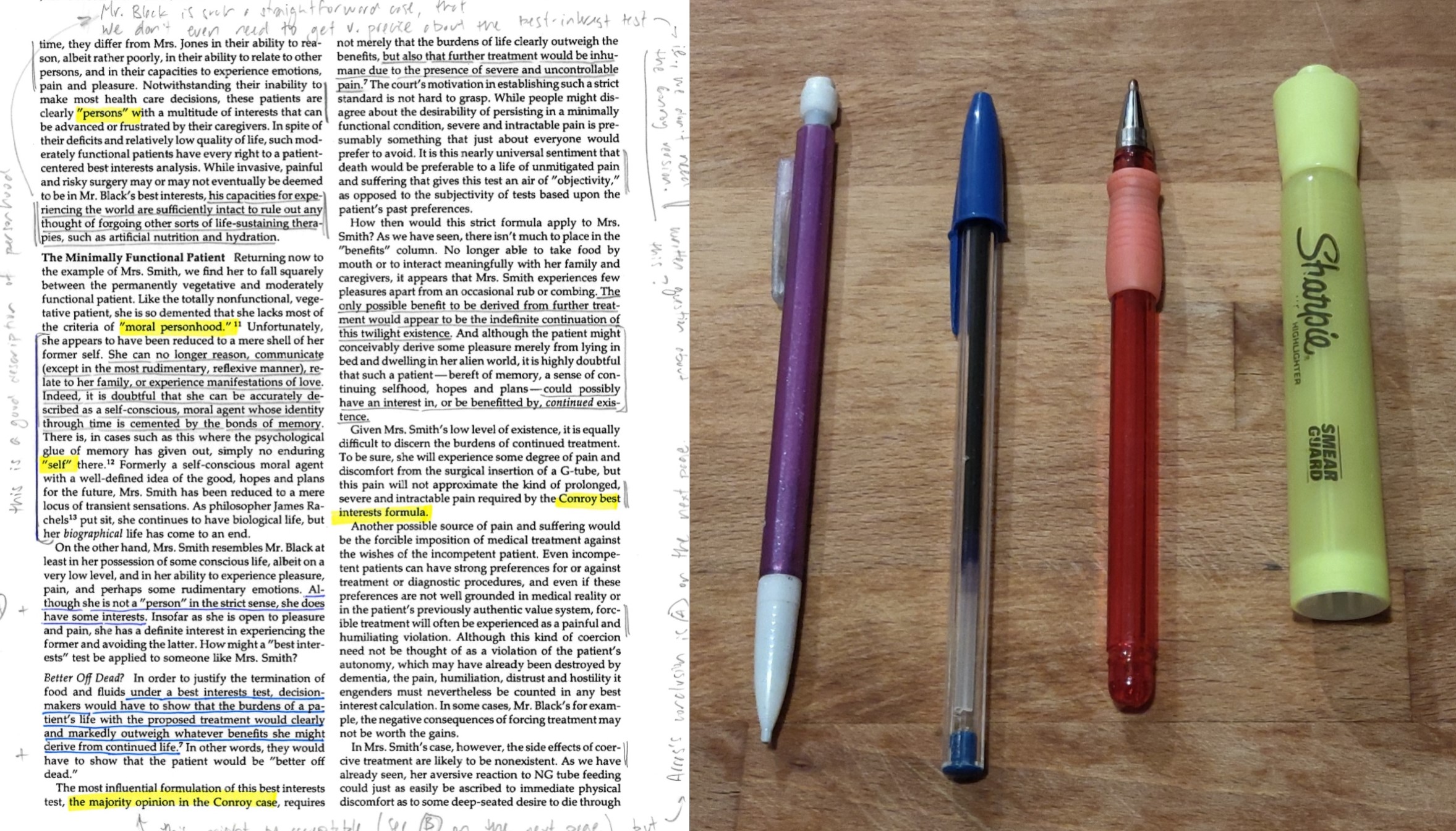reading actively
When you are reading a chapter or an article, it should be on paper (printed out or purchased as a book) and you should have four tools on hand: a pencil, a blue pen, a red pen, and a highlighter.

You should always have the pencil in your hand—except for when you occasionally use one of the other three. The pencil is used for all of your basic underlining and for writing in the margin. Don't underline everything, but in each paragraph, there should usually be at least one or two sentences that you underline. The blue pen is used to underline the occasional sentence that stands out as being more important than the sentences that you have underlined in pencil. You probably want to underline one or two sentence in blue per page (or one sentence every three or four paragraphs).
Underlining in red is reserved for only the most important sentences. This will, perhaps, only be one sentence in a chapter or article—the author's thesis statement—or, at most, one sentence per section. Finally, the highlighter should only be used for important words or terms—either the first time that they are used or when they are defined. But only highlight the word or term, use your pencil or blue pen to underline the definition.
There are four reasons for reading this way. First, using the pencil, blue pen, and red pen forces you to distinguish between what is (1) important, (2) more important, and (3) most important. Just by making these distinctions, you will understand the article much better than if you don't make them. Second, you will always have to come back to the article or chapter, and having it marked up this way will make it much easier to quickly get back into it.
Third, what you are holding in your hand primes your brain for a certain kind of thinking. Holding a pencil or pen primes your brain for linguistic thought, which is what you want when you are reading an article. In contrast, a highlighter in your hand primes your brain for coloring, which is useless when you are reading. Finally, you should write in the margins while you are reading (and occasionally erase what you have written), and so the pencil is also used for that task.
What should you write in the margins? For starters, you should number anything that is in a series (for example, three reasons for something, or four pieces of evidence, or whatever it might be). Second, any time you think that you have figured out what the author is doing, write it down. You might need to correct it later, but if you don't write it down and you forget it, you'll be starting from scratch the next time you read that page. Beyond those two types of notes, you can put questions that you have in the margins. (The next time that you look at the article, you might be able to answer them.) You can also make a note of where a related or supporting point was made earlier. (And when you have a pencil instead of a highlighter in your hand, you'll always be ready for noting connections between different parts of the article or chapter.) Or you can write lots of other things. Eventually, you will find your own groove, but this is the way to start.